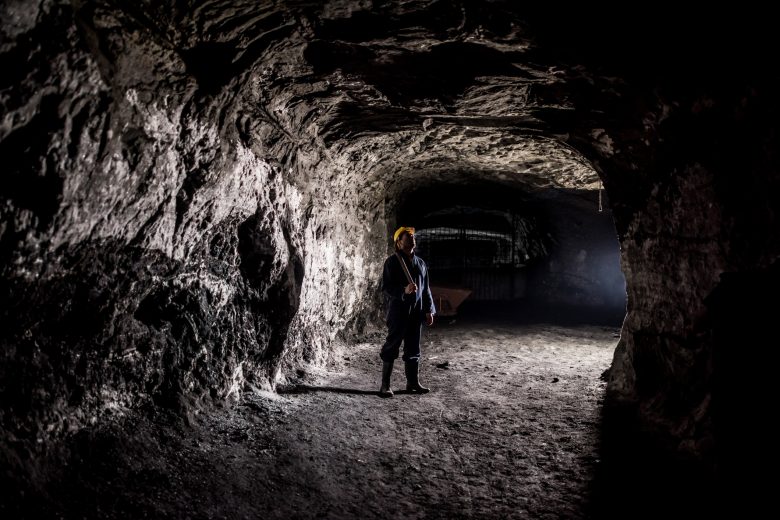Historically, ground falls have been the most significant hazard for miners. In 1999, 70% of all underground fatalities were caused by roof (the overhead surface of a coal mine) and rib (the side of a pillar, the wall of an entry or the solid coal on the side of any underground passage) falls. Despite significant improvements in ground control (measures taken to prevent roof falls or coal bursts) for underground mines, roof and rib fall accidents remain the leading cause of injuries for coal miners.
Mine Safety and Health Administration (MSHA)’s annual Preventive Roof/Rib Outreach Program (PROP) runs through September and is intended to educate and increase awareness of mining hazards that can lead to roof/rib fall accidents. “Continuous Mining Machine Operator Safety” will be the focus for 2017. Since 2013, roof and rib falls or coal bursts led to the deaths of five continuous mining machine operators and injured 83 additional continuous mining machine operators.
Some of MSHA’s key points during PROP for continuous mining machine operator safety are:
- Watch for and communicate any adverse roof and/or rib conditions observed.
- Follow the roof control plan.
- Remember the roof control plan contains minimum support guidelines and supplemental support may be required due to changing conditions.
- Conduct thorough examinations.
- Avoid distractions.
Agency inspectors will specifically address best practices for preventing roof fall accidents. If you take a close look at the issues that will come up during a mining inspection, you’ll note a common theme—they’re all caused or made worse by human factors.
Keep an eye on your surroundings
Miners are responsible for being aware of their surroundings in a mine at all times. It’s important for miners to make frequent evaluations of the worksite. Pre-shift and on-shift evaluations are suggested, and there are never too many inspections when it comes to mining. Roof/rib conditions can change rapidly so ensure these are communicated to both supervisors and miners—never presume that people are aware of any changes you observe.
Keep your mind on task
Fatigue can lead to inattention or distraction, heightening complacency and leading employees to taking their mind off what they’re doing while working in a mine. Incidents with significant impact can occur in a moment of carelessness, so it’s important for miners to never let their guard down, watch for changing conditions or pay attention to their surroundings at all times. One way to mitigate these types of human factors in mining is to implement the buddy system. A buddy can see what you can’t—buddies look out for each other, communicate and keep each other safe.
Avoid complacency
There’s an old saying among miners that goes something like, “Bad top will hurt you but good top will kill you.” The saying relates to how miners become complacent—they pay particular attention to the bad top because they know it’s more susceptible to fall so they’re constantly checking it. They feel safe with the good top so they aren’t as likely to be wary of it, letting their guard down around it because they’re not expecting a fall. The best position is to be in a place where you can see everything—safe zones aren’t necessarily the safest place. It’s also easy for miners to rationalize going inby (in the direction of the exposed area of a coal bed from which coal is being extracted) if they’re only going a short distance or if they’ll only be a couple of seconds. Complacency helps miners rationalize dangerous acts they’ve done before, maybe numerous times, without any bad consequences.
Escape line of fire potential
Another really old saying among miners is, “If you hear the rock talk, you know to stay away”—no longer sage advice by today’s standards. The new rule of thumb among miners is to keep two or three pins behind the last set of pins. The common belief is to stay close to the pins that support the roof because debris shouldn’t fall there. By all logical standards, this is a reasonable assessment. But because conditions in a mine are anything but predictable miners always need to give themselves plenty of space to assess their surroundings—especially when they’re in what they deem to be a safe zone. There have been several instances where debris has fallen in by a pin or in a place believed to be safe. Never stop checking your surroundings.
Education and training
MSHA’s PROP is just one initiative to reach the mining community. It’s important that all employees, not just new hires, receive regular and refresher courses. Another effective way to reach miners is regular toolbox talks. Always be aware of your work environment in a mine and communicate the hazards. For more information on mining safety, please visit MSHA’s website at www.msha.gov.
For more information about helping workers keep their eyes and mind on task, fight complacency and avoid line-of-fire potential, check out our free webinars.

